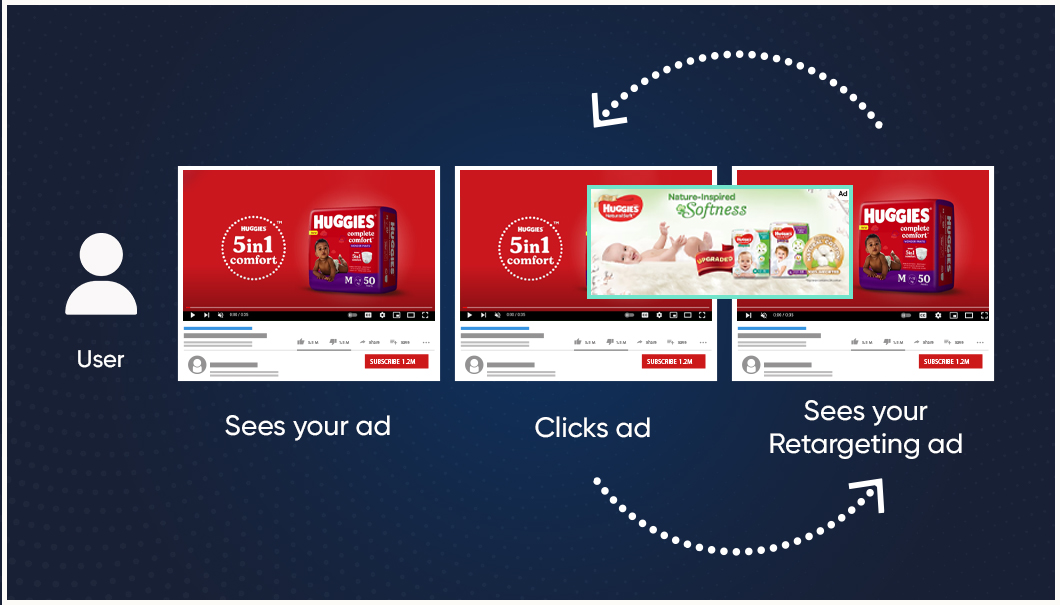Kid’s Advertising Made Smarter: Unleashing the Benefits of Contextual Advertising | 19 Jun, 2023

Advertisers are focusing on capturing the attention of young content consumers but why?
Children are an important demographic for advertisers as they have a significant impact on their parents’ buying decisions.
A study revealed, 94% of parents have been co-viewing more content intended for their young ones in the last 12 months.
In this blog, we will explore how advertisers can overcome these challenges by leveraging contextual targeting techniques for kid’s advertising.
According to a survey, 9 out of 10 children can easily access YouTube.
But targeting them isn’t easy because COPPA (Children’s Online Privacy Protection Act) and other regulatory authorities have set guidelines that ensure that kids aren’t exposed to unsafe content.
But 20 percent of the inventory on children’s streaming was not COPPA compliant, meaning it was aimed at adults.
Advertisers have been deploying adult ads on kid’s channels (like POGO, Cartoon Network, Hungama, and many more) to target the masses. This wasn’t done directly but the ads showed were like a famous automobile brand car crashing. This happened because many advertisers failed to implement the kids’ advertising guidelines.
Apart from mismatched ad placements, advertisers have to face many challenges while advertising on kid’s platforms.
What are the Big Concerns for Advertisers in Kid’s Advertising?
1. Issue with Transparency
Problem: Advertisers often face challenges in ensuring transparency in their advertising efforts. They need to know where their ads are being placed and whether they are. This becomes even more critical when advertising to children.
Solution: Contextual targeting can be beneficial as it offers maximum transparency. It is an effective solution for ensuring transparency in kids-themed advertising. By analyzing the content and context of the webpage or app, advertisers can ensure their ad is placed in an appropriate environment that resonates with their target audience. Further with this approach of targeting, advertisers have control over their ad reach. With the help of inclusion and exclusion lists, advertisers can granularly target their audience.
For example, a person who wants to create awareness about a new course on Open Web: the advertiser can filter the audience based on their age, education, location, job experience, job title, and many more. Based on these requirements of the advertiser, the ad will be deployed on relevant content.
2. No Retargeting

Problem: Retargeting plays a crucial role in advertising by reaching out to potential customers who have already shown interest in a brand or product. However, when advertising on children’s content, due to privacy concerns and regulations advertisers can’t retarget them.
Retargeting can be accomplished because contextual targeting relies on content.
Solution: Contextual targeting allows advertisers to focus on the content itself rather than individual user data. By analyzing the context of the content, advertisers can deliver relevant ads to the intended audience without relying on personal information or tracking cookies. This approach enables effective retargeting based on the content that aligns with children’s interests and preferences.
3. Ad Wastage
Problem: Ad wastage occurs when ads are shown to irrelevant audiences, resulting in inefficient spending and decreased Return on Investment (ROI). In kids-themed advertising, it is crucial to ensure that ads are reaching the right audience to maximize their impact.
Relevancy is the key to reduce ad wastage.
Solution: By analyzing the content and understanding the themes, keywords, and context of kids-themed content, advertisers can ensure their ads are displayed to the most relevant audience. With the help of frequency capping contextual targeting reduces ad wastage by not targeting the non-engaged audience. Further, advertisers can optimize the campaign to target only interested audiences.
3. Wrong Ad Placement
Problem: Placing ads in inappropriate or irrelevant contexts can harm a brand’s reputation, especially when advertising to children.
The contextual targeting approach eliminates the chance of wrong ad placement
Solution: By leveraging contextual ads, advertisers can deliver their ads in an environment that is relevant and suitable for kids. Contextual targeting offers brand safety and suitability. With content analysis it ensures brand safety and the exclusion list acts as an additional layer of protection. This list is prepared based on the brand’s risk-taking capabilities.
How to Reach Target Audience Contextually?
Silverpush offers cutting-edge technology Mirrors, the next-generation artificial intelligence. It works on contextual triggers, celebrities, brands, emotions, on-screen text, actions, objects, and location. These contextual triggers work on two broad content categories: video and text.
For example, a baby brand wants to target the audience on Facebook for its new baby powder. With the help of contextual triggers, a brand can reach its target audience. The triggers may include The face of Mason Smith (parenting influencer ), the brands of First Cry, Johnson’s Baby, objects like Baby toys, Baby products, and actions like women bathing a baby, and men combing baby hair.

The AI will identify key contexts thousands of pages. During this process, it will perform word-by-word to identify contextual triggers. Post selecting high-performing pages, triggers, and brand safety guidelines, AI technology will place the most suitable ad.
Brands can utilize this opportunity to advertise on YouTube, Facebook, and Openweb.
Semantic analysis, Natural Language Processing, Dynamic Creative Optimisation, image annotation, and several other compilations of technologies ensure the right moment, platform, creativity, and audience.
Conclusion
Advertising to children requires a strategic approach that takes into account the challenges and sensitivities involved. Contextual targeting offers a viable solution for advertisers looking to advertise on kids-themed content.
By leveraging the power of content analysis, advertisers can ensure transparency, retargeting, reduce ad wastage, and eliminate the risk of wrong ad placement.
As the advertising landscape continues to evolve, contextual targeting provides a valuable tool for advertisers seeking to connect with young audiences while maintaining brand integrity and responsibility.

BLOGS
Breaking Tradition: Innovative Marketing Strategies for Vietnam Tet 2025
One of the most significant cultural events for the Vietnamese, Tết Nguyên Đán, or the Vietnamese Lunar New Year, is almost here. Marking the beginning of spring, this time of year has, for generations, been a season for family gatherings, delicious feasts, and honoring ancestors. The week-long holiday witnesses the ...

BLOGS
5 Proven Black Friday and Cyber Monday Marketing Strategies for 2024
Black Friday and Cyber Monday (BFCM) are no longer exclusive to the U.S. market. It has gone global and is now one of the most important dates when every business wishes to ensure a spike in their online or in-store sales. With customers hunting for the deal, e-commerce businesses and ...

BLOGS
Why News Content is a Goldmine for Advertisers: Debunking Brand Safety Myths
Brand safety concerns have long clouded advertising alongside news content. As a marketer and advertiser, you might think twice before placing your ads against news stories, fearing harm to the reputation of your brand. However, new findings by Stagwell challenge those longtime fears, showing that advertising in news environments could be ...







